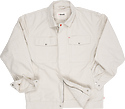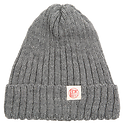Settle down at the back – ‘Natsubate/夏バテ’ (pronounced ‘nat-soo-bah-tay’) is a perfectly innocent portmanteau of the Japanese words ‘natsu/夏’ (summer) and ‘bate-ta/バテる’ (exhausted or worn out) and describes the lethargic malaise brought on by interminable hot ’n’ humid Japanese summers. Not something we have to worry about in early November; if you’re in the UK you might willingly trade today’s weather for a dose of heat exhaustion.
Wheeling and dealing in the scorching sun. Although most of the trees were being sold in lots in auction (hence the numbered tags/paddles), off to the sides separate deals were being made as buyers split lots and discussed prices.
Two nights earlier in Toyokawa, at the suggestion of our friends and hosts Alice and Tak, we had attempted to keep our humours in check with the traditional natsubate preventative: an unagi don (grilled eel and rice) supper. Though delicious, the anti-natsubate effects of the eel must have worn off by the time we arrived in Inazawa. No sooner had we stepped out of the air-conditioned minivan than the heat struck us like a blacksmith’s hammer, draining what little energy we had preserved for this last leg of our Japanese visit (more on this in future Niwaki publications – subscribe to our newsletter from the footer below to stay in the know).
Above: two potential buyers inspect a lot of Musella lasiocarpa aka Chinese dwarf banana. Such plants are representative of the trend towards the low-maintenance, Western-influenced planting that is increasingly popular in Japanese garden design.
You might hope that a tree market would be a shady place, but alas, on the whole the trees for sale at this market turned out to be relatively small (less than 1m in most cases).
Once upon a time Inazawa, north west of Nagoya, supplied a quarter of all garden trees in Japan. That’s a lot of trees. The rich soil of the nearby Kiso river provides an ideal environment for saplings, and even today the area maintains a respectable 15% share of the market.
The trees for sale have also changed with the times: at Ibori there is a definite emphasis on easy-to-manage plants to suit Western-influenced gardens, and indeed we were sorely disappointed not to find a single Cryptomeria japonica or even a Pinus thunbergii for sale during our visit (though we did speed past a nursery growing both on the way). Of course, there’s still a thriving market for our preferred style of ‘niwaki’ (garden tree) but it seemed on this particular day we were in the wrong place.
And my God the heat. My thick north European blood was not coping: my head acheth, my stomach doth (dith?) protest. Was it the (intentionally) undercooked chicken we had consumed the night before? No, this was different, and my focus shifted from the admittedly rather pedestrian tree selection to keeping cool. How were the regulars regulating, I wondered?
Tough guys wear Takumi-style jackets and trousers and laugh in the face of sunburn.
Some of the harder guys – and it was mostly guys – let the sun do its worst without any more protection than their standard issue pale work suit provided (the inspiration for our Takumi Rip-Stop jackets and trousers - see below). For the most part sensible wide-brimmed hats and cold oolong tea were the order of the day. The next level of protection came from towels and tenugui (see below for Niwaki’s tenugui selection), soaked in water and draped across heads.
The smartest solutions in evidence were technology based. Not a million miles from the homemade tinfoil helmet of a paranoiac, silvered hats constructed from material that looked like the inside of a Niwaki Lunch Bag. Jake spent a long time chatting with one such be-foiled fellow giving me ample time to admire his hat. A future Niwaki product perhaps?
Foil to keep the sun at bay AND stop the aliens scrambling your brain
The most exciting innovations – and a potential game changer for gardeners around the world as the world warms – were the self-cooling work vests. Battery-powered fans keep air moving around the core, giving the wearer a slightly inflated appearance. It’s the same principle as the extra baggy Tobizubon work trousers, also in evidence, upgraded for the Anthropocene.
Temperature-regulation aside, the coolest guy in the whole market had bagged a coveted shady spot and was overseeing proceedings with nonchalant calm. When I asked to take his picture he gave an almost imperceptible shrug of assent and continued his watch, letting me grab a few frames without ever looking my way again.
As we retreated to the shade and air-con of the minivan, admitting defeat, I wondered if the real secret to staying cool was thinking cool. Mind over matter, or perhaps sense over centigrade. Next time I’ll be prepared … now, how to make it through the winter?
The getaway vans: modest, economical and above all functional Kei trucks and similar work vehicles.






















